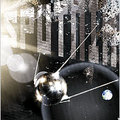The cheap and cheerful Renault Logan is a genuine “world car”
| |
 | |
Mr Frugal and his car |
ONE of Carlos Ghosn's favourite words is “frugal”. As boss of Renault-Nissan, a Franco-Japanese carmaking alliance, he likes to talk of “frugal management”. Now, as his firm rolls out the Logan, its low-cost “world car”, in developing countries across the globe, Mr Ghosn has found a whole nation to help champion his cause. “India's not just a market—it's where we learn to be frugal,” he says.
Renault-Nissan is learning from Mahindra & Mahindra, an Indian conglomerate with interests from tractor-making to financial services. Mahindra Renault, a joint venture formed in 2005, launched a new version of the Logan in India this month with a price tag of $7,100 before tax. The development of the new model cost 15% less than expected and was completed a month ahead of schedule. Compared with the original Logan, which Renault designed in Romania after acquiring the former Dacia factory near Bucharest, the new version has better styling, beefed up suspension to cope with India's poor roads and improved air-conditioning.
Patrick Pélata, Renault's product and strategy chief, likens the cheap and cheerful Logan to a basic mobile phone that just makes and receives calls. Since 2004 over 450,000 Logans have been sold in 51 countries. The car is variously sold under the Renault, Nissan and Dacia brands.
The initial sales target of 50,000 cars a year in India sounds modest, but Renault has big plans for India, where manufacturing costs are 10% lower than in Romania, says Mr Pélata. Sales of new cars are growing by 10% a year and are expected to reach 2m by 2010. Renault Mahindra is investing $950m in a new factory in Chennai that will be capable of making 350,000 vehicles a year and will build six Logan models, including an estate and a hatchback.
The new Indian-developed version of the car will also be introduced into several other countries, including Argentina, Brazil and Mexico. But perhaps the most unusual new market for the car is Iran, where it went on sale last month. Despite petrol rationing and some unkind words from the industry minister, who says the Logan is “mediocre”, customers are undaunted. The Tondar, as it is known locally (the name means “thunder” in Persian), has broken all sales records: over 100,000 pre-orders were placed within the first week, 85,000 of them accompanied by a deposit of 51% of the sale price, which starts at 82m rials ($8,870). Many buyers have not even seen the car. Deliveries start next month.
The Iranian model is being built with Iran Khodro (IKCO), the Middle East's biggest carmaker, and by Saipa, Iran's second-largest carmaker, both of which are controlled by the state investment authority. Renault's launch of the Tondar represents the biggest foreign investment in Iran outside the oil business, and will increase the country's carmaking capacity by nearly one-third. (The joint-venture agreement was signed three years ago, before Iran became embroiled in a dispute with the United Nations.)
Since Iran's economic isolation began in the late 1970s, IKCO's staple product has been the Paykan (which the Tondar finally replaces), an almost unchanged version of the Hillman Hunter, built in a 1960s factory transplanted from Scotland. IKCO and other Iranian carmakers also did deals with Peugeot and South Korean firms. But their designs were always years out of date. The Tondar marks the first time in a generation that Iranians will be able to drive a modern car built in their own country. Renault even hopes to export cars to other countries in the region, subject to UN sanctions. Designed, built and sold in the developing world, the Logan is shaping up to be the VW Beetle of the 21st century.




